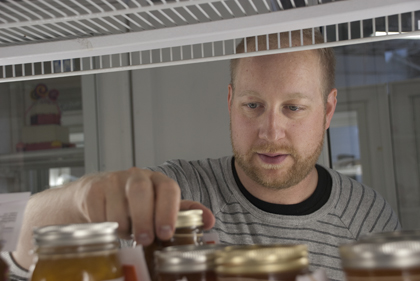Growing up in Port Hope, Ontario (that’s in Canada) my favorite time of year was early September. School was back (so I got to nerd it out with my friends), hockey season started and the town fair was on. The Port Hope Fall Fair was a definite highlight of my adolescent years – one of the only times I had full freedom for a couple of nights in a playground wrought with fair foods, dangerous rides and carnies.
It was awesome. Except for the time I threw up after riding the Gravatron 3 times in a row.
And when April Wine headlined the fair-ending concert.
The North Carolina State Fair starts today and things here done are on a different scale. The fair runs for 11 days (instead of 4), the midway consists of way more than a basketball toss game; rides seem to be less dangerous; Kelly Pickler and Dionne Warwick are playing and my attention has moved away from chasing girls around to judging home-preserved foods. Times have changed (although April Wine still sucks).
Jimmy Ryals, writer for the NC State website ran a feature on the home food preservation competition that I’m part of.
Subtlety isn’t the first word you would associate with North Carolina State Fair food.
More likely candidates: decadence, sugar, fried or heartburn.
But a subtle palate went a long way at the fair’s food competitions Tuesday, where you were likely to hear praise for a cookie’s “crumb appeal” or the “cabbage-y-ness” of a preserved relish. Annually, faculty from the NC State College of Agriculture and Life Sciences help choose the state’s best homemade food products, from jellies and jams, to wine and cheese, to cakes and cookies.
At the highest levels of competition, the differences could be, well, subtle.
Take, for instance, the preserved foods contest, which includes jams, jellies, chutneys and otherwise preserved fruits and vegetables. As superintendent, Ben Chapman, assistant professor and food safety specialist in the Department of 4-H Youth Development and Family and Consumer Sciences, chooses judges in the preserved foods categories. In the fruit preserve category alone, those judges consider a fairly dizzying range of variables: fruit shape, clarity and color, texture, packing and fullness, consistency, and the proportion of syrup to fruit.
And, of course, flavor.
“When it comes to home food preservation, there’s this sort of combination of art and science that happens,” Chapman said. “What you’re looking for is perfection.”
The search itself can be exhausting. Judging generally covers four to five hours and several dozen samples. But it’s also rewarding and endlessly fascinating, said Carolyn Dunn, professor of family and consumer sciences and preserved foods judge.“The creativity is just amazing, of what people will come up with,” said Dunn, who has been a fair judge for more than 20 years. ” They’ll pickle just about any vegetable or fruit.”
Safety and science-wise we have stipulations as to processing time and recipes that have to be followed (according to NCHFP or USDA guidelines) – the art part is how well the recipes are executed, whether the pack of the product is done well and how well the color is retained. Hundreds of entrants provided almost 1300 products to be considered for best in category and best in show this year, an increase of almost 300 over 2010.
